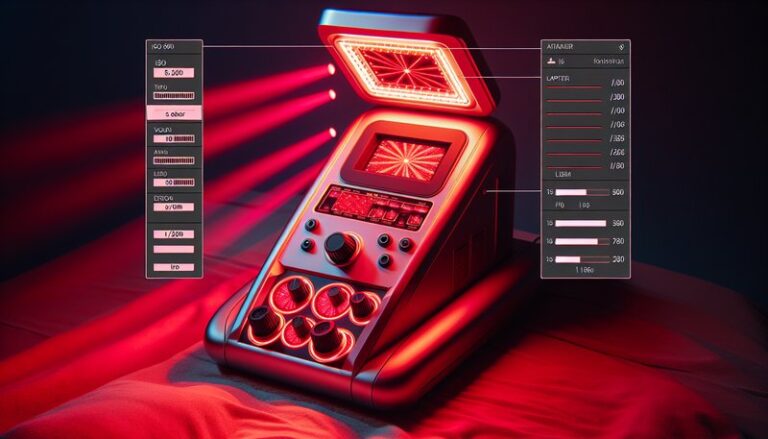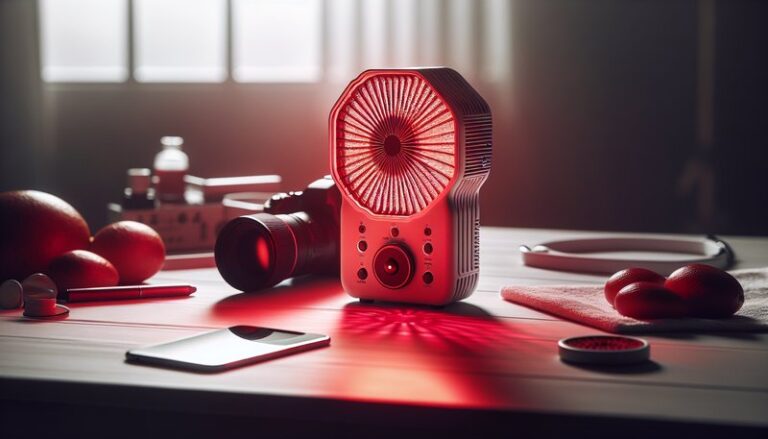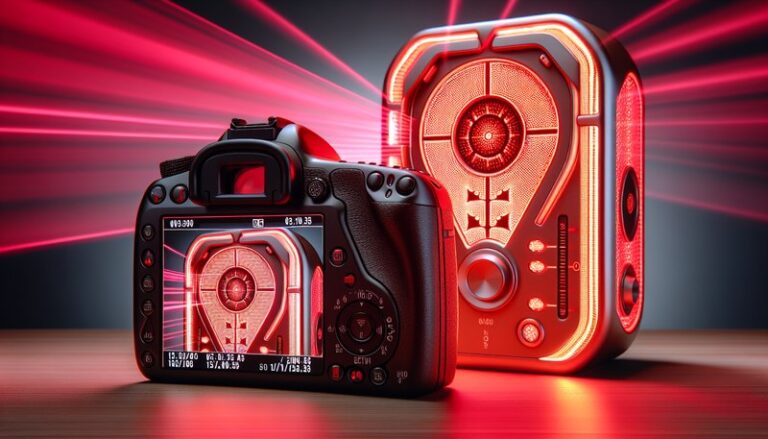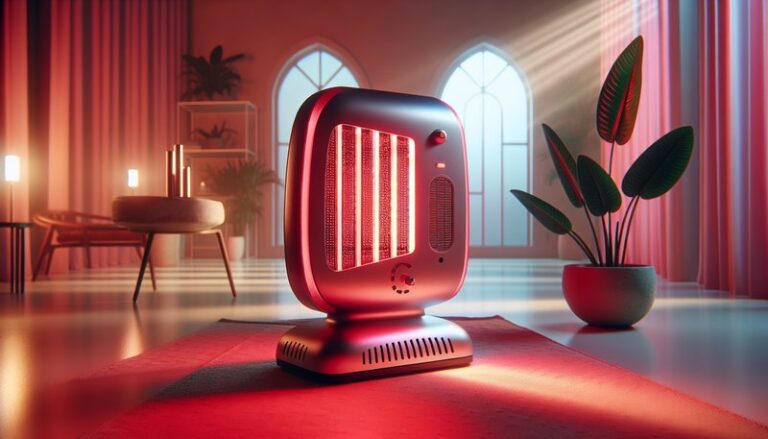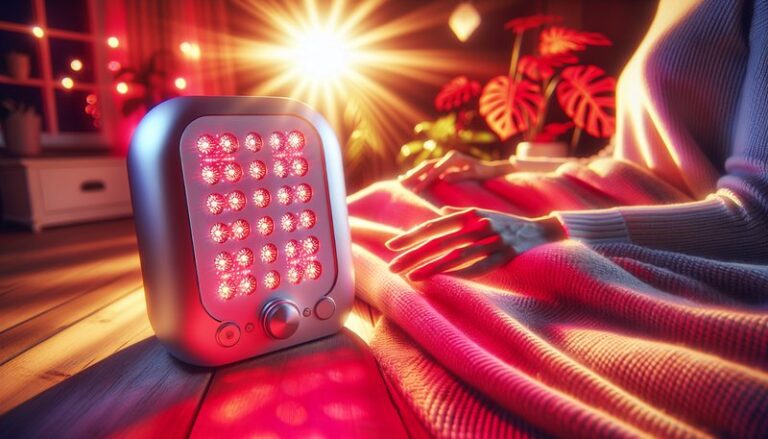What Is A Red Light Therapy Bed?
Have you ever heard of a red light therapy bed and wondered what it might offer?
Red light therapy beds have become increasingly popular in wellness circles, but many people are still uncertain about their purpose and effectiveness. This article will explore what red light therapy beds are, their benefits, considerations before use, alternatives, and address common questions surrounding them.
Key Takeaways
- Red light therapy beds use specific wavelengths of light to penetrate the skin and promote healing and rejuvenation.
- Benefits of these beds include improved skin health, pain relief, and enhanced muscle recovery.
- Before using a red light therapy bed, consider factors such as skin type, treatment duration, and how it may fit into your overall wellness routine.
What is a Red Light Therapy Bed?
A red light therapy bed is a device equipped with LEDs that emit specific wavelengths of red and near-infrared light. Designed for both therapeutic and cosmetic purposes, these beds shine concentrated light onto the skin, aiming to stimulate cellular activity and enhance various bodily functions.
The light penetrates the skin to varying depths, depending on the wavelength, influencing cellular processes. This form of therapy was first developed in the mid-20th century and has evolved into a widely used option for individuals seeking non-invasive treatment solutions for various conditions.
How Do They Work?
Red light therapy beds operate by emitting light at wavelengths typically ranging from 600 to 900 nanometers. These wavelengths are absorbed by the mitochondria in cells, enhancing their energy production via ATP (adenosine triphosphate). Increased ATP production can lead to improved energy levels, better cell repair, and enhanced regeneration.
The setup is often similar to a tanning bed, where users lie down inside the unit, allowing the light to reach all body parts evenly. Sessions typically last between 10 to 30 minutes, depending on the specific treatment goals.
What are the Benefits of Red Light Therapy Beds?
The benefits of red light therapy beds extend to numerous health and wellness aspects. In the following sections, we will explore some of these advantages in detail.
Improved Skin Health
One of the primary uses of red light therapy is enhancing skin health. Studies have shown that it can reduce wrinkles, fine lines, and acne by promoting collagen production and cell turnover. Users often report more youthful and vibrant skin after regular sessions.
Pain Relief and Inflammation Reduction
Red light therapy has also been associated with pain relief and reduced inflammation. Research indicates that it can assist in the recovery of sore muscles, joint pain, and even chronic pain conditions such as arthritis by increasing circulation and reducing inflammation markers.
Enhanced Muscle Recovery
Athletes and fitness enthusiasts frequently use red light therapy beds to accelerate muscle recovery. By improving blood flow and decreasing muscle soreness, these beds can help individuals bounce back faster after strenuous workouts or injuries.
Boosting Mood and Sleep Quality
Many users experience enhanced mood and improved sleep quality after using a red light therapy bed. The therapy seems to help regulate circadian rhythms and alleviate symptoms of seasonal affective disorder (SAD) through photobiomodulation.
Learn more with our post on Best Red Light Therapy to Buy?
Supporting Hair Growth
Red light therapy beds have also shown promise in promoting hair growth for individuals experiencing hair loss. It stimulates hair follicles and increases blood flow to the scalp, potentially leading to thicker and healthier hair.
Is it Possible to Use a Red Light Therapy Bed at Home?
Absolutely, many commercially available red light therapy devices cater to home use. Portable options like handheld devices and lightweight panels allow individuals to experience the benefits of red light therapy without visiting a professional facility. However, using a device at home does come with certain considerations.
What are the Advantages of Home Use?
Using red light therapy at home can be convenient and cost-effective. It allows for flexible scheduling and eliminates travel time to a clinic or salon.
Check out the details in Red Light Therapy at Planet Fitness
What are the Disadvantages of Home Use?
While home devices can be effective, they may not deliver the same intensity of light as professional beds. Users might also lack guidance on proper usage and might need to invest time to understand the right settings for their specific needs.
What are the Things to Consider Before Using a Red Light Therapy Bed?
Before committing to red light therapy, it’s essential to assess several factors.
Skin Type and Sensitivity
Individuals with sensitive skin or specific conditions, like lupus or photosensitivity disorders, should consult a healthcare professional before using red light therapy to ensure it’s safe for their skin type.
Treatment Duration and Frequency
It’s crucial to determine the appropriate treatment duration and frequency. Overuse can lead to diminishing returns or irritation, while insufficient sessions may not yield desirable results.
Consultation with Healthcare Providers
Before beginning any new therapy, especially for medical conditions, consulting with a healthcare professional is advisable. This ensures a tailored approach based on personal health needs.
What are the Alternatives to Red Light Therapy Beds?
If red light therapy doesn’t seem right for you, several alternatives offer similar benefits.
LED Facial Masks
These masks use similar technology to target specific facial concerns like wrinkles or acne. They offer an easy, at-home solution with various wavelength options.
Cold Laser Therapy
This form of therapy targets pain relief and inflammation but typically uses a different mechanism. It involves the use of low-level lasers instead of LED lights, allowing for similar healing effects.
Microdermabrasion and Chemical Peels
For those focused on improving skin texture and appearance, microdermabrasion and professional chemical peels can provide substantial results. However, these options may require more downtime compared to red light therapy.
Conclusion: Is it Recommended to Use a Red Light Therapy Bed?
Overall, red light therapy beds present a compelling option for those seeking non-invasive treatment methods for skin rejuvenation, pain relief, and muscle recovery. As with any health-related choice, weighing the benefits against personal needs and potential risks is essential. For many, incorporating red light therapy into their routine can enhance their overall well-being and health.
Frequently Asked Questions
How long do I need to use a red light therapy bed to see results?
Typically, users may start noticing improvements within a few weeks of regular sessions, but this can vary based on individual conditions, frequency of use, and specific health goals.
Is red light therapy safe for everyone?
While generally considered safe, individuals with certain medical conditions or those taking specific medications should consult their healthcare provider before using red light therapy.
Can I use a red light therapy bed daily?
Many users find that using a red light therapy bed several times a week is effective. However, daily use should be discussed with a healthcare provider to prevent any adverse effects.
Are there any side effects to using red light therapy?
Most users experience minimal to no side effects. However, some may encounter mild irritation or a temporary increase in redness, particularly in those with sensitive skin.
What should I wear during a red light therapy session?
While some users prefer to wear clothing that covers most of their body, exposing skin directly to the light can enhance treatment effectiveness. Most facilities recommend comfortable attire that allows good exposure of the area being treated.

